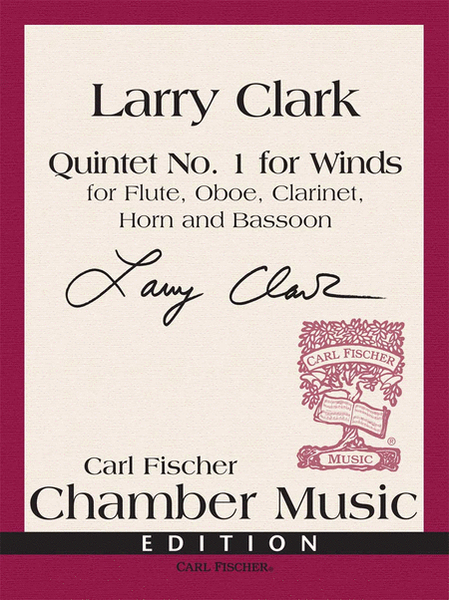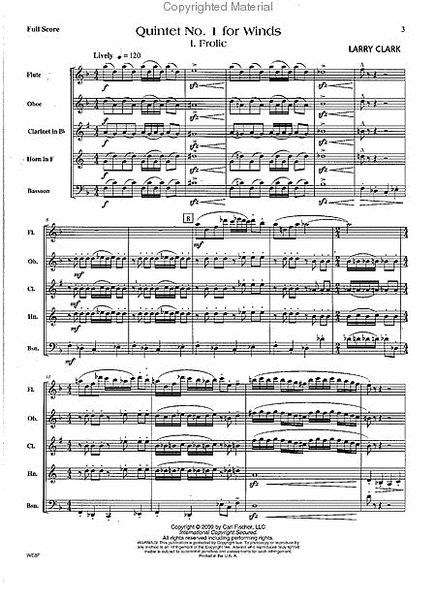Quintet No. 1 for Winds
for Flute, Oboe, Clarinet, Horn and Bassoon
-
Ships in 1 to 2 weeks
Details
Description
SKU: CF.WE8
For Flute, Oboe, Clarinet, Horn and Bassoon. Composed by Larry Clark. SWS full score - collate. Set of Score and Parts. With Standard notation. 4+4+4+4+4+16 pages. Carl Fischer Music #WE8. Published by Carl Fischer Music (CF.WE8).ISBN 9780825868436. UPC: 798408068431. 9 X 12 inches. Key: F major.
Carl Fischer Music Editor-in-Chief and veteran composer Larry Clark has penned a beautiful quintet for winds, commissioned by the Ars Nova Quintet at James Madison University in 1991, where it was premiered. Quartal and quintal harmonies are the driving force behind this piece in three movements; each exploring a different style. "Frolic" is inspired by Stravinsky's use of stacked fifths, "Song" is melancholy and thoughtful, and "Rondo" goes out with a bang, loosely following the rondo format and ending soundly in F major. For advanced players.
This three-movement suite for a traditional woodwind quintet was completed in1991 for the Ars Nova Quintet at James Madison University. The membership of thequintet was made up of upperclassmen and graduate students at the university. Thepiece was premiered by this ensemble and was subsequently selected as the winningcomposition in the James Riley composition contest. The genesis of the piece comesfrom the use of quartal and quintal harmony.The first movement “Frolic” opens with stacked fifths that were derived from thecomposer’s study of Stravinsky’s use of this harmonic technique. The melodic materialfor this movement is based on an arpeggiated minor chord with a major seventh, andthe movement is developed around the interplay between the opening material andthe melody that first appears in m. 8.The second movement “Song” is a melancholy piece with a pensive melody overa bass ostinato first presented in the bassoon. The charm of this movement is how themelody is presented in octaves with different combinations within the quintet, first withoboe and horn, then with other combinations. The middle section of the movementinjects triplet figures into the rhythmic feel, figures that are based on parallel-movingseventh chords. This material is developed before the main melody returns. The movementis completed with a short reprise of the middle-section material.The final movement “Rondo” is a rip-roaring piece that begins with a fun bassoonbass-line leading to the rondo melody based on the Dorian mode over quartal harmonies.The rondo form is loosely followed, and the episodes more or less increase inlength and development. The overall form is ABACAB1A. The movement continues touse harmonic devices such as quartal/quintal harmony and parallel seventh chords thatwere used in the other movements. The piece is completed and punctuated solidly in Fmajor.


 Share
Share